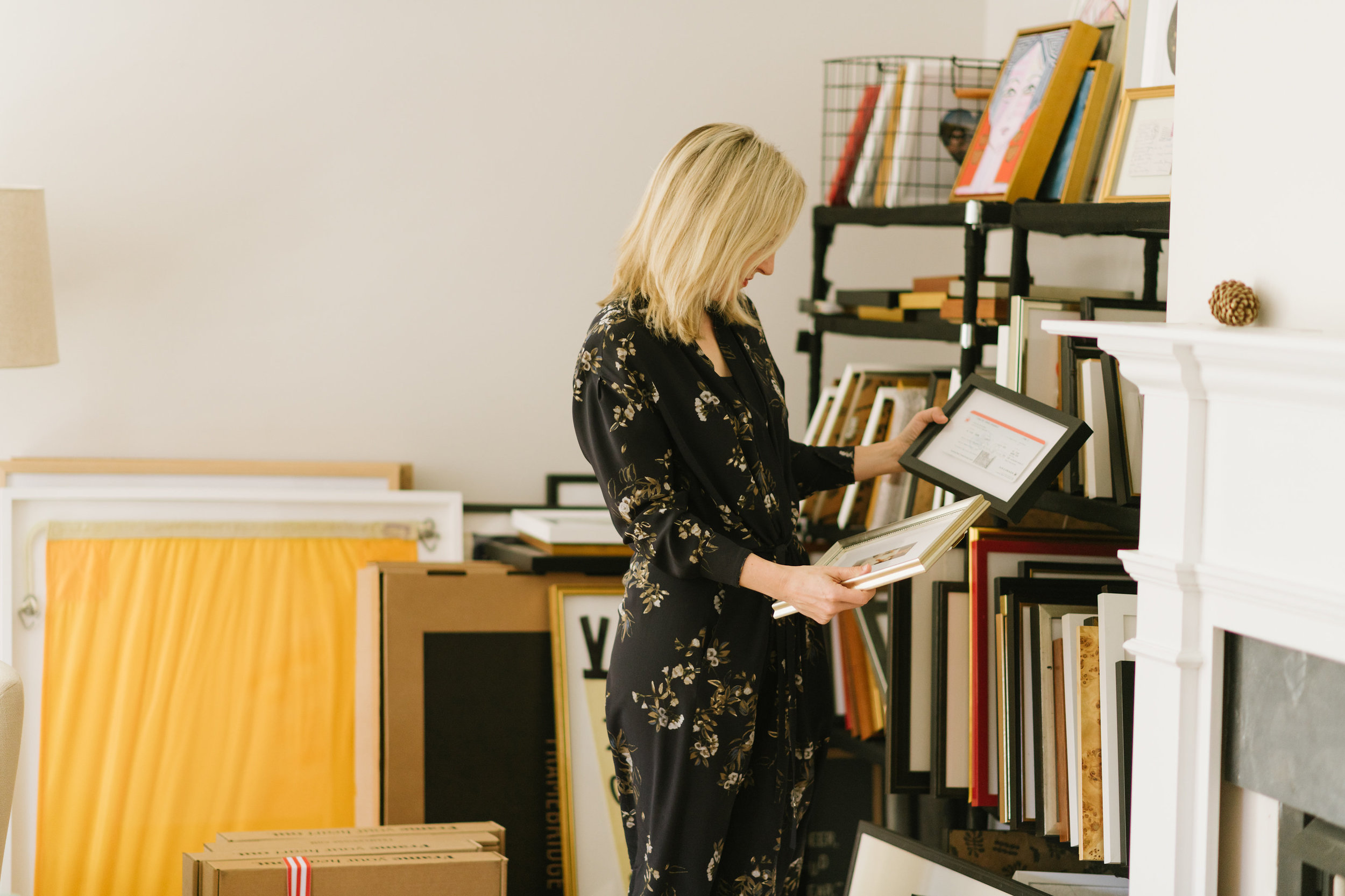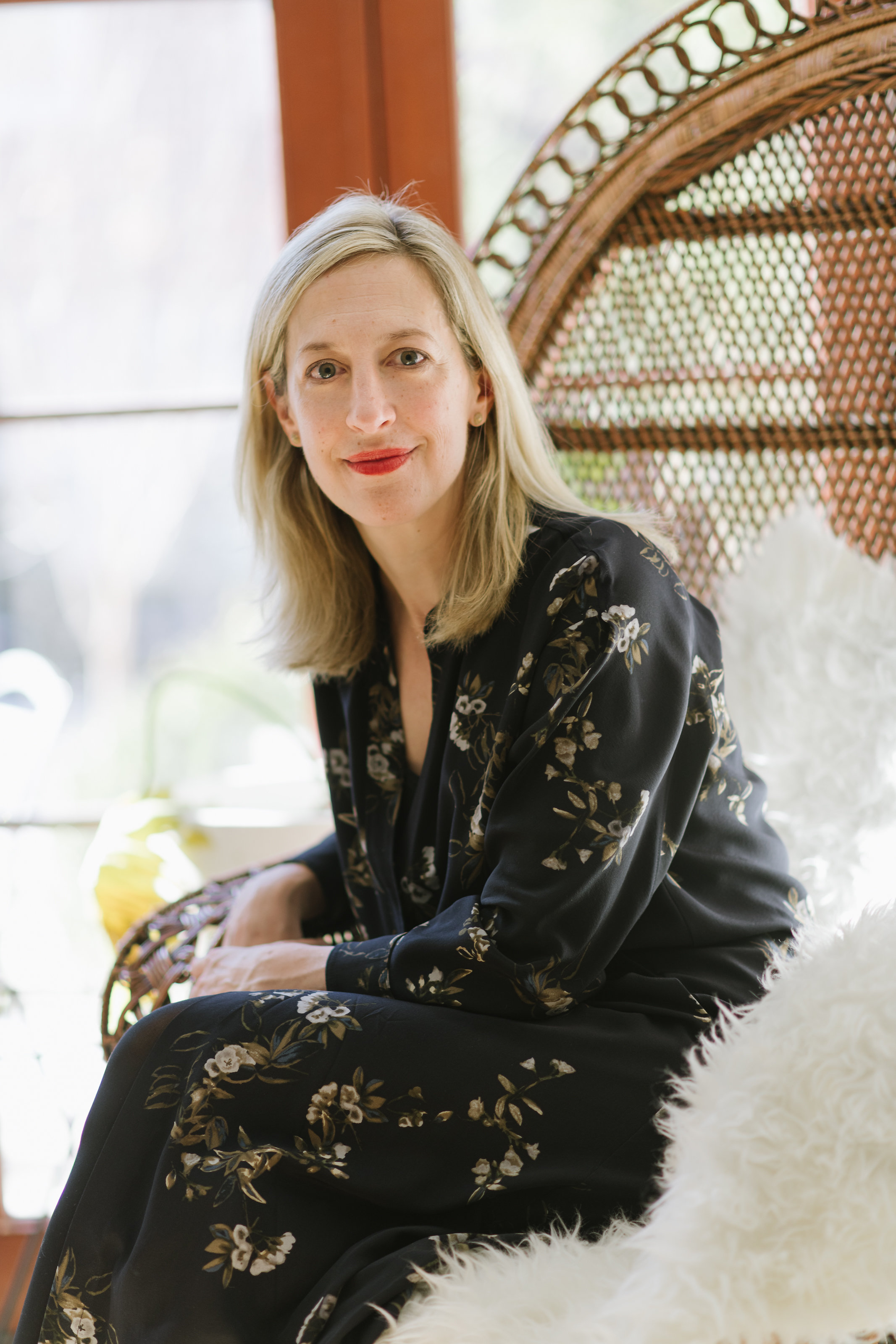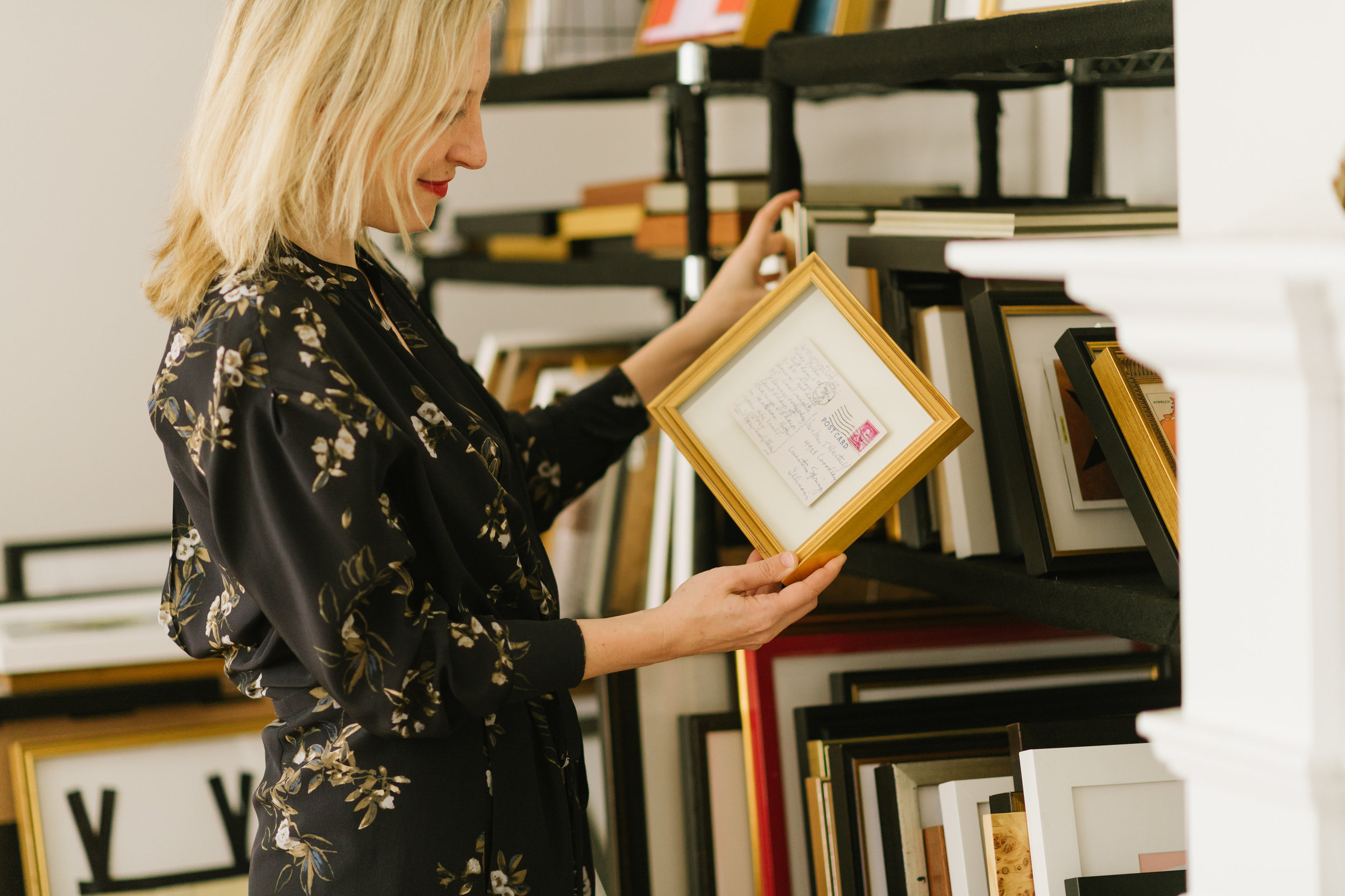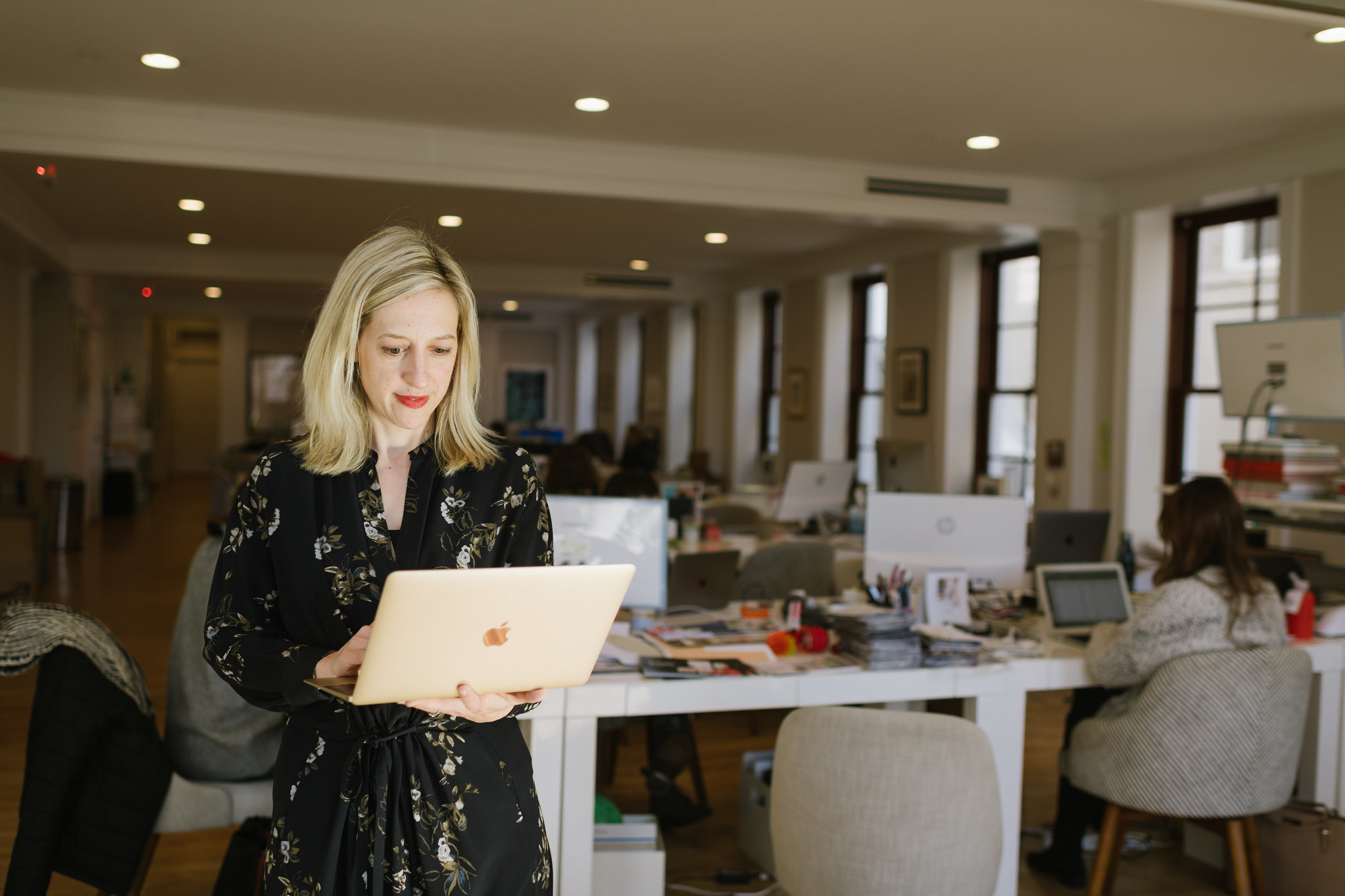‘I Realized Life Is Short, You Can Cover Up a Nail Hole’
A ponytail, a break-up note, and a collection of scarves from the running of the bulls. Susan Tynan’s company has framed it all.
‘Everyone has things that represent their life or mean something to them, and they want to be surrounded by those things,’ says Susan, who founded Framebridge in 2014.
The company was born out of frustration. Susan had four vintage National Parks posters she wanted to frame—reminders of the annual hiking trips she took with her sister. She couldn’t find a frame under $400.
‘I’d spent so much time at the store and I felt embarrassed so I just said yes, but I certainly didn’t have $1,600 to spend on those frames. The posters meant a lot, and they represented these fun trips with my sister when we would get out of the city and be together, but the process left me with an uneasy feeling.’
Susan stewed on the idea for a long time, no longer buying souvenirs or prints that required framing. She worked for several consumer tech start-ups, followed by a brief stint in the Obama administration, before landing at Living Social. There, Susan managed the home services deals, and soon realized she wasn’t alone. Other people wanted affordable framing, and were frustrated by what was available.
‘I think there was a belief that younger people didn’t want to frame anything. The prices and the way it was delivered only made sense for the current customer. Younger customers who value experiences and create a lot of content would actually love framing it were more affordable and easier to get accomplished.’
Armed with the necessary marketing skills, Susan took a framing course, learned it could be done at scale, and launched the company. ‘A real start-up story,’ Framebridge’s early days were rooted in a borrowed conference room in Chevy Chase. When they got their own production facility in Maryland, Susan and her team worked around a single card table in the warehouse.
‘You launch and you think, what if we’re overrun with orders, and of course you’re not. All of the orders were friends, cousins, or our lawyer. It was not strangers in the beginning. Then we started to market it, first on Facebook, and now in lots of different ways. We started to see customers come in, had real pick-up our first holiday season, and have grown quickly ever since. It’s been driven by delivering a good product and making our customers happy.’
After outgrowing the warehouse, Susan’s corporate team moved to an office on O Street. Today, they work in a ‘stunning’ office above the old Georgetown Theater, jumping at the chance to remain in the neighborhood when the space became available.
Framebridge’s business is done almost entirely online, with the exception of a few annual pop-up shops. The model eliminates everything Susan hated about the traditional framing experience. Framing materials are already chosen for the customer, from acrylic that doesn’t break when it’s shipped and includes UV protection, to acid-free mats, all-wood moldings, and high-quality hardware on the back. Pricing is based on the size of the customer’s art or photo, not the style of frame.
‘We want you to feel free to say let’s try a gold frame, or a natural wood; something you might not have chosen with the custom framing model because people typically retreat to what’s cheapest, not what looks best.’
Customers can select their own frame style, or work with one of Frambridge’s designers. Susan says those who select the latter fall into one of two categories—design-oriented people, or customers who just want someone to do it all for them.
Four years into the business, Susan has seen just about everything come through the production facility.
‘We frame a lot of hand-written wedding vows. Matchbook covers, a lot of restaurant menus—especially from The French Laundry in California. A lot of Hamilton playbills. I loved a draft of a company’s mission statement with cross-outs on it, from the notebook where it was drafted. We learned a beautiful story about a woman who had a pair of scissors framed, which was not an easy project. They were the scissors her grandfather brought over when he immigrated to America and opened a barber shop. I think it’s really cool to see the things that reflect a person’s journey and what they’ve been through.’
For those who have a collection of sentimental items and unframed pictures, but don’t know where to begin, Framebridge’s gallery wall service allows customers to send them a Dropbox of photos that they’ll help sort through.
When in doubt, Susan says you can’t go wrong with a white mat, Framebridge’s Marin natural wood frame, and the juxtaposition of a traditional print in a modern frame—or vice versa. For gallery walls, she says the key is to start in the center and build out, spacing each frame about 1.5 inches apart.
‘People have made gallery walls too hard. You really can eyeball things, and you can move them around if you don’t get it right the first time, and add over time. One of the most fun things about being in this business is I’ve gotten over the biggest fear my mom instilled in me, which was don’t put a nail hole in the wall. Now I realize life is short, you can cover it up. As long as the item inside means something to you, you’re going to be proud to have it on your wall.’
The last few years have been such a blur that Susan hasn’t had time to fully focus on her own framing. Still, she’s quick to print photos of her two kids, and counts an old Australian flag from her husband’s home country among her favorite framed pieces. Yet it’s a block print from Venice that embodies the ‘Framebridge secret.’
‘I love the print because it’s pretty, but the trip was really fun. Venice flooded and my husband and I had to wade through knee-deep water the entire time. We were having so much fun, even though the city just didn’t function. It’s what I hope Framebridge means to people, which is—yeah, it’s the thing you framed, but it’s the story within it.’











